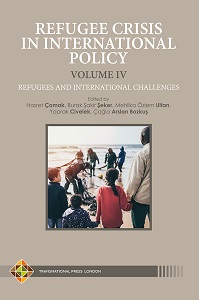Refugees and Security
Refugees and Security
Author(s): Ahmet Sapmaz
Subject(s): Security and defense, Migration Studies, Asylum, Refugees, Migration as Policy-fields
Published by: Transnational Press London
Keywords: Migration Series; Climate change; DACA; immigrants; international policy; irregular migration; maritime security; migration policy; refugee crisis; refugee law; refugees; Rohingya; terrorism;
Summary/Abstract: Refugee flows and refugee crisis are the most used terms in the international arena lately. The United Nations High Commissioner for Refugees (UNHCR) defined the 20th century as the “refugee century”. The number of refugees, which was 2.1 million in 1950, 1.5 million in 1960, 2.5 million in 1970, 8.9 million in 1980, 17.2 million in 1990, 15.2 in 20091increased to 26 million in 2020. Today, millions of people are refugees on every continent. Most of these refugees originated from conflict and war-torn countries from Africa and the Middle East. Again, according to the UNHCR data, as of 2019, 79.5 million people around the world, that is 1% of the world population, have been forcibly displaced. Of these, 26 million are refugees, 45.7 million are internally displaced and 4.2 million are asylum seekers. 73% of the refugees are in neighboring countries, and 68% originate from only 5 countries.2 As can be seen from the numbers and percentages given above, refugees are an increasingly important reality in both national and international systems. The relationship between the expanding and deepening understanding of security and the refugees has recently attracted the attention of the society, statesmen and academics.3 This attention often addresses the impact of refugees on security. In this study, the relationship between refugees and security and the effects of refugees on national, international, social and human security are discussed.
Book: Refugee Crisis in International Policy - Volume IV: Refugees and International Challenges
- Page Range: 7-25
- Page Count: 19
- Publication Year: 2021
- Language: English
- Content File-PDF

